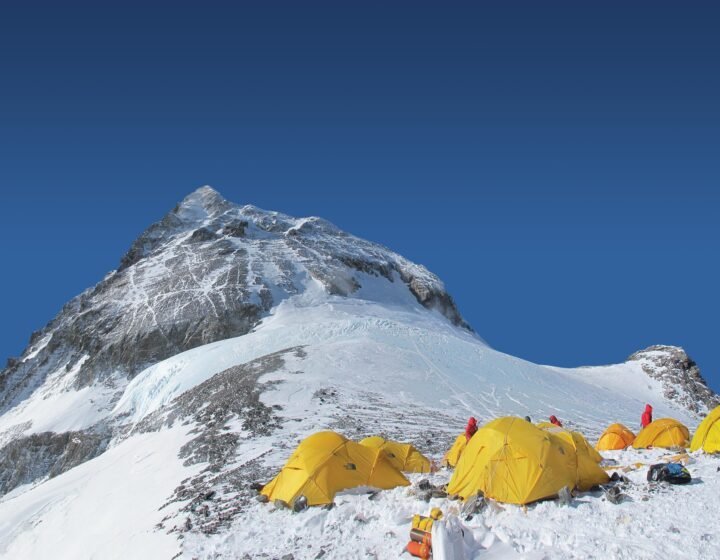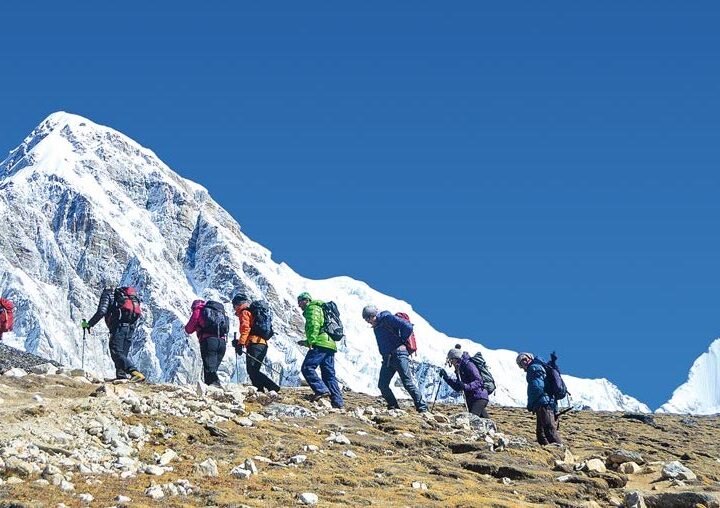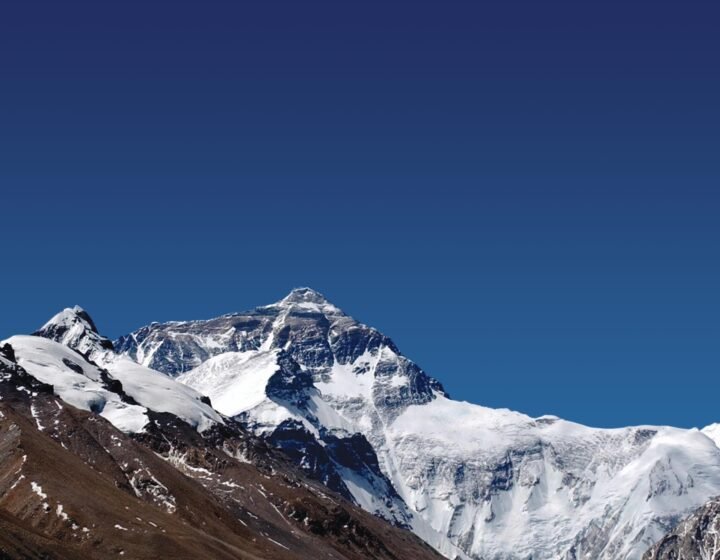- Details
Detailed itinerary
Itinerary- Tour Includes/Excludes
- Useful Info
- Trip Map
- FAQ
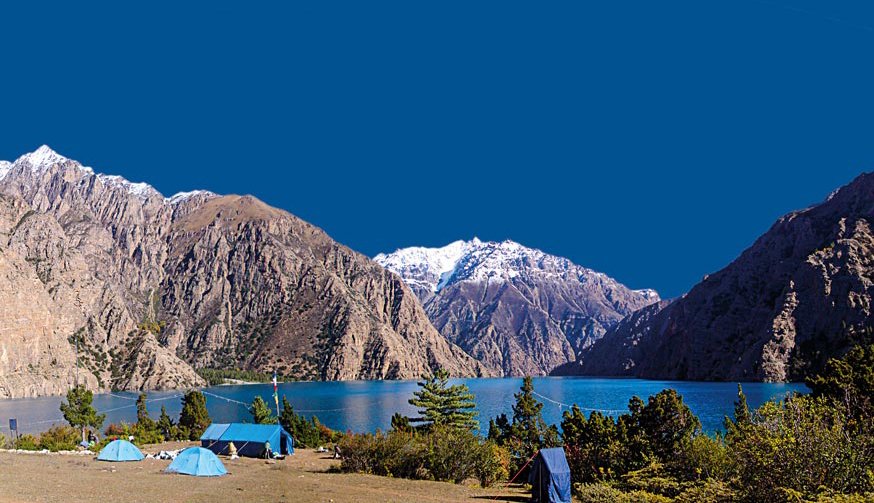
Trip overview
The best way to get to the Dolpo region is to travel from Kathmandu to Nepalgunj, in the sultry southwest near the Indian border, and then to the Dolpo airport at Juphal.
The Upper Dolpo trek is in Nepal’s mid-western region, hidden behind the Dhaulagiri Range, where snow-fed streams flow from high mountains, but few are perennial. The Lower (Outer) Dolpo features semi-arid terrain with steep gorges and tiny valleys whereas the Upper (Inner) Dolpo has a vast arid region of undulating semi-desert highlands that continue the morphology of the Tibetan plateau. After flying to Juphal, the Upper Dolpo trip begins with a river crossing and continues to Phoksundo Lake, which is a true representation of Dolpo’s magnificence. Elevations of 4,300 meters or higher are seen in upper Dolpo villages.
The lovely, peaceful environment, the mesmerizing Shey Phoksundo lake, the secluded Ringmo towns, and the centuries-old monasteries are the main features of the Upper Dolpo trek. Aside from that, there is wildlife, lovely lakes, high peaks, and different way of living.
To reach the Shey Gompa, this route involves a high pass, the Nangda-La Pass (5360m). It is a crystal monastery that acts as an activity center in a sunny setting. You may visit Buddhist temples as well as those affiliated with the pre-Buddhist faith of Bon throughout the stroll.
Dolpo Trek Highlights
- Experiencing the local Bon culture and unique way of life
- The setting for Eric Valli’s film, Himalayan Caravan, Sky-burial, polyandry, and
- Paincho and Parma (exchanging goods instead of money) are still practiced.
Itinerary
Day 1: Welcome to KathmanduWe arrive in Juphal after a short and scenic flight from Nepalgunj. Our journey will begin in Juphal. Our journey begins once we arrive in Juphal. In Juphal, we meet the trekking staff and the crew. We begin our journey to Dunai after meeting everyone. Dunai is one of the region's most important villages. To get to Dunai, we hiked along the Bheri River. Spend the night in Dunai.
We drive to the airport in Kathmandu after an early breakfast and board a plane to Nepalgunj. The staff will transfer you to the hotel in Nepalgunj, where you will have lunch. The rest of the day can be spent exploring the markets and observing the business district. You can also go to the Nepal-India border. Spend the night in Nepalgunj.
We arrive in Juphal after a short and scenic flight from Nepalgunj. Our journey will begin in Juphal. Our journey begins once we arrive in Juphal. In Juphal, we meet the trekking staff and the crew. We begin our journey to Dunai after meeting everyone. Dunai is one of the region's most important villages. To get to Dunai, we hiked along the Bheri River. Spend the night in Dunai.
After breakfast in Dunai, we prepare to trek to Shey Phoksundo Lake, one of the most important places in the Dolpo region and one of the highlights of our trek. On the first day, we trek through the Bheri River's riverbed. We then continue our journey through small remote settlements, lovely meadows, and terraced wheat fields. The path takes us through several towns, including Hanke and Parela. From there, we will head to Shey Phoksundo National Park. We set up camp at Ankhe.
On the fifth day, we leave Ankhe and begin our trek to Renje. We take another narrow riverbank trail on our way to Renje. The trails become more difficult as you pass through several ups and downs. We cross the suspension bridge and proceed to the riverbed, then to the rocky hills. Renje is where we camp.
We leave Renje after breakfast to hike to Shey Phoksundo Lake. Today's journey is likely to be one of the most important of the entire journey. We get a beautiful view of Phoksundo Lake while trekking. The trail then takes us through dense forests to Phoksundo Khola. We walk through lovely villages like Ringmo, where we can admire the beautiful Mani walls.
We leave the lake for Phoksundo Khola after breakfast, with a beautiful sunrise and a beautiful view of Shey Phomsundo Lake. We walk through the far western part of the lake, eventually arriving at the riverbank. We make our way down the rocky trails towards more remote areas to reach the river's bank. We set up camp there.
The next day, we begin our journey through the valley, heading north. As we ascend, the surrounding hills become desolate, and the snow-capped mountains begin to appear. We cross a small stream before ascending a steep hill. We get a beautiful view of mountains like Kanjirowa and the Nangdala Pass after reaching the top of the hill. We stay at the Nangdala Pass High Camp.
We will trek through Nangdala Pass (5350 meters), the highest point of the entire trek. We prepare to trek to Shey Gompa after breakfast in Phoksundo Bhanjyang. We climb a steep hill on the way to Shey Gompa and then trek to Nangdala pass (5350m). We can see stunning views of mountains such as the Kanjirowa Himal and other Tibetan peaks. From the pass, we can also see Mustang. After taking in the scenery for a while, we made our way to Shey Gompa.
We prepare to trek to Namgung after breakfast in Shey Gompa. You travel through barren and rocky terrain with little vegetation. The first part of the trek is a steep ascent to the Sela Pass. After two hours of trekking, we arrive at the pass, which offers a stunning panoramic view of Kanjirowa Himal and Mustang. We descend to Namgung after a brief rest. Namgung is a camping area.
The following day, we hiked around Namgung. Namgung Gompa, which is located on the edge of a cliff, is a well-known gompa. We explore the area, take in the breathtaking scenery, meet the locals, and spend the night at the camp.
We leave Namgung after breakfast for Saldang. We begin with a steep hike to the top of the hill, from which we have a stunning view of Saldang village. Then you'll begin your descent towards Saldang. You will arrive at your destination after about 2 hours of trekking. In the evening, we can sample the local cuisine and wine. We set up camp in Saldang.
The following day, we explore the village and go on a hike in the nearby hills and mountains. We trek to Yangre Gompa, one of the most important gompas in this region. This gompa is one of the most visited in the area. We're back in Saldang.
On the first day, we prepare for our trek and leave Saldang for Sibu after breakfast. The path leads us through small settlements with terraced fields of wheat, buckwheat, and potatoes. In addition, we can see Tibetan-influenced culture and local houses. We also pass through a number of monasteries and temples on our way to Sibu.
The following day, we prepare to trek to the Jyanta Pass base camp. This is the journey's final pass. We set out early in the morning. We climb through the rugged, rocky hills for about two hours before trekking through the dunes to Dachun Khola. We continue our journey through pastureland, where we can see yaks and sheep grazing. We stay at the Jyanta Pass Base Camp.
We have an early breakfast on the 17th day and prepare to trek through the Jyanta Pass. We make a three-hour-steep ascent to reach the pass. We have a spectacular view of Dhaulagiri, Manaslu, and other snow-capped mountains from the pass. We take a break at the pass, take photos, and then begin our descent to Tokyu village.
We are preparing to descend from Tokyo to Juphal. Six days of trekking are required to reach Juphal from Tokyu. We trekked from Tokyo to Dho Tarap on the first day. The trek includes a path along the bank of Thakchiu Khola. The journey to Dho Tarap is brief but breathtaking. Dho Tarap is one of the most populous villages in the area.
The following day, we hiked from Dho Tarap to Shim Ora. The trek is a simple descent along the Tarap Khola. For a while, we continue trekking by crossing the river via a suspension bridge. We then cross a number of smaller streams before arriving at Shim Ora. We set up camp at Shim Ora.
As we descend quickly, the vegetation changes and subtropical forests appear. We begin our journey through the Tarap Khola gorge. We trekked along some beautiful roads and easy trails after many days. The trail then descends to Khanigaon via beautiful villages such as Toltol, Nawarpani, Chhyugar, Laina Odar, and Chhedhul Gompa. We set up camp in Khanigaon.
We descend from Khanigaon to Tarakot. The journey is relatively short, and the trails are simple. We descend from Khanigaon and cross a suspension bridge over the Tarap Khola. We continue our trek. We arrive at the Thuli Bheri's bank after a few hours of trekking and continue along the river to Tarakot. Tarakot is where we'll be camping.
As we continue descending, we gradually approach more populated and developed areas. The vegetation becomes more pleasant, and the trek becomes less difficult. We walk along the Thuli Bheri River through dense forest. We pass through many small settlements with beautiful houses and various ethnic groups. The journey is brief. We arrived in Dunai, the Dolpa headquarters, after a 5-hour trek. We established a camp at Dunai.
On the 23rd day, we finally made it to Juphal. From Juphal, we'll take a flight to Nepalgunj and then to Kathmandu. The trek from Dunai to Juphal is fascinating as we walk alongside the Bheri River's bank through beautiful forests. For the last time, we trek through Nepal's western lands. Juphal is reached after a 6-hour trek.
Take a flight back to Kathmandu from Nepalgunj, which takes around 6 hours.
It's time to fly back home, remembering all of the exciting Nepal experiences. Please ensure that any valuable deposits have been collected from the agency security department. Those flying to another destination will be transferred to the airport and assisted with check-in procedures.
Included
- Private transports for arrival and departure on both domestic and foreign flights.
- Twin-share, bed-and-breakfast accommodations in standard hotels in Nepalgunj and Kathmandu, as per the schedule.
- While on the Dolpa walk, our cook will make freshly cooked full board meals for breakfast, lunch, and dinner.
- While Upper Dolpo walking, properly boiled drinking water, tea, and coffee.
- Tented camp lodging while trekking.
- The welcome supper that is outlined in the schedule.
- A half-day guided city tour that includes the cost of admission to a world heritage site.
- All airport fees and domestic flights as specified in the itinerary.
- If necessary, private transportation to and from the trek's beginning and conclusion places.
- All camping supplies, including tents for members, employees, and the kitchen, dining, and bathroom.
- Trekking equipment provided by our company, including a sleeping bag, fleece liner, down jacket, and rain poncho.
- A skilled and knowledgeable wilderness first aid-trained trek leader or guide.
- A unique Upper Dolpo trekking permit, as well as all applicable fees.
- A hiking map for the Upper Dolpo.
- A Trek Sherpa, culinary staff, and other support personnel.
- Porters who transport both group and individual equipment.
- Adequate insurance for all employees, including porters.
- Winter attire and hiking equipment for the staff, especially the porters.
- Entry fees for conservation areas, national parks, and TIMS permits.
Not Included
- Nepal entry visa costs, any type of travel insurance.
- All drinks and main meals while on a Dolpo trekking vacation; international airfare; airport tax.
- Gratuities and personal costs such as a hot shower, battery charge, phone, and beverages
Useful Info
When booking and arriving, all foreign travelers must provide their personal information, including passport and visa information.
- Expect none of the trekkers to pack anything that won't decompose. It is very forbidden to use intoxicating substances while hiking, and it is advised to keep an extra day to deal with unforeseen events. It is also advised to carry cash.
- It is a must for all travelers to maintain their passports or visa with travel agencies.
- There is a larger risk of becoming dehydrated, so drink plenty of water regularly and carry additional bottles with you.
- When hiking at a higher altitude, layering your clothing is the greatest approach to regulating your body temperature. Therefore, zippered clothing is the ideal choice.
- Because mobile phone and camera batteries have a high likelihood of going dead or losing power quickly, a portable charger is essential for your electronic devices.
Trip Map
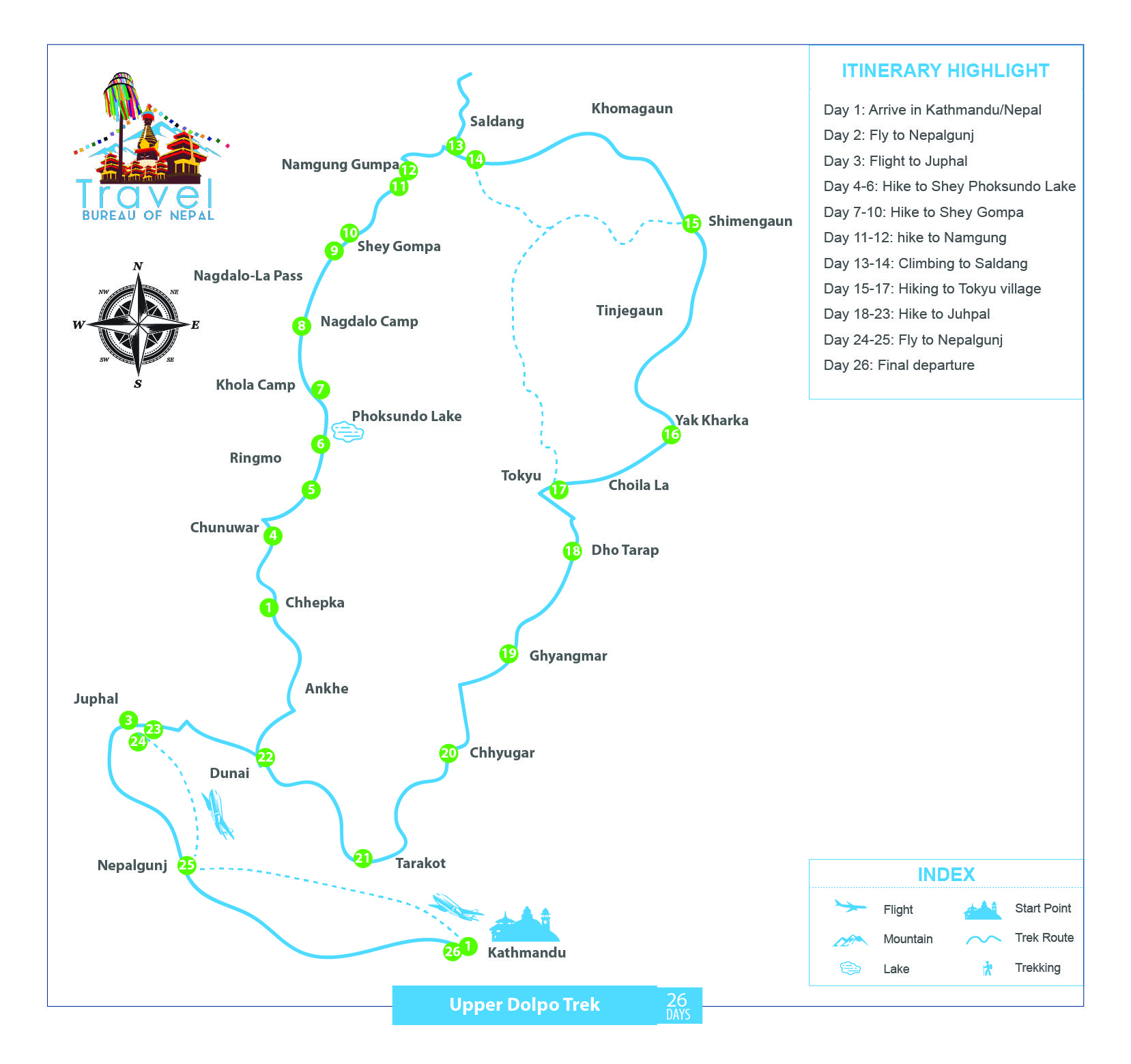
FAQs
-
What is the difficulty level of the Dolpo trek?
Dolpo is a challenging walk, not because of its height, but because of its length. It's a long journey that takes 20 to 28 days on average, depending on the route you take. While passing through valleys and wooded places like as the Phokshundo National Park, trekkers must also tackle a number of high, frigid passes such as the Baga La (5,070 m), Sela (5,094 m), Nangdola (5,110 m), Numa La (5,190 m), and Jayanta La (5,190 m) (5221 m).
-
What is the trek's beginning point?
Because the Dolpo trek is notorious for the heavy covering of snow that engulfs the region, Himalayan Trekkers recommend planning your journey during the summer (April and May) and The months of September and October in the fall are sunny and cheerful.
-
Is phone and internet service available in the Dolpo Region?
If you wish to remain in touch with friends and family, Himalayan Trekkers recommend purchasing a local Nepalese sim card such as NCELL or NTC. However, because it is rather out of the way, there is no assurance that you will receive reception anywhere. On the other hand, disconnect from technology and immerse yourself in the magnificence of the mountains.
-
What currency does need to carry?
As there are so few opportunities or requirements to spend money along the way, you will not be needing much cash. Any costs that must be paid in advance will be handled by Himalayan Trekkers. You can spend up to the maximum amount of Nepali Rupees/NPR for energy bars or water.

